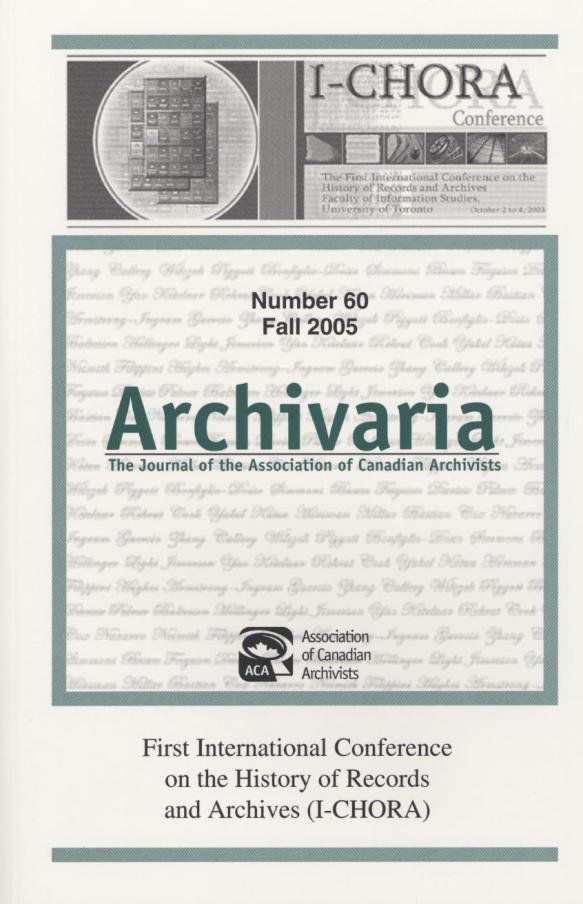Material Literacy: Reading Records as Material Culture
Résumé
This paper links certain ideas from archival literature with modern conservation and museological theory and practice, and illustrates some of these ideas with an example from the holdings of the Archives of Manitoba. Material literacy is the ability to decode and interpret the significance of the material composition and construction, and of the physical state, of a tangible record. A creator’s material, technology, and design choices will be informed by the need to communicate within the contemporary socio-cultural context. Once created, records start changing through natural deterioration, through wear from use, and through deliberate alterations to the records by their creator(s), and by subsequent custodians and users. Evidence of creation and change are part of the history of a record, and the past and present choices of creators and custodians may have a significant impact on the future interpretation of the record. Archives also actively change this evidence through physical and intellectual mediations during their custodianship. The author briefly considers how the material aspects of records are approached in archival practices for assigning value, examination, description, and documentation of interventions. Records in their original forms can powerfully communicate meaning between generations and cultures, offering researchers a personal and direct sensory engagement with the past. Awareness of records as material culture is required before the value of physical evidence can be recognized and evaluated as a primary source of contextual evidence, thereby enriching the preservation of the meaning of the records.
RÉSUMÉ
Cet article établit des liens entre certains concepts archivistiques et la théorie et la pratique modernes en conservation et en muséologie, et illustre ces concepts à partir d’exemples tirés des archives du Manitoba. L’alphabétisation matérielle constitue la capacité de décoder et d’interpréter l’importance de la composition matérielle, de la construction et de la condition physique d’un document concret. Le choix du matériau, de la technologie et du design par le créateur seront influencés par le besoin de communiquer au sein du contexte socio-culturel contemporain. Dès leur création, les documents se transforment à cause de la détérioration naturelle, de l’usure, et d’altérations délibérées par leurs créateurs, les utilisateurs et les gardiens subséquents. Les signes de la création et des transformations font partie de l’histoire du document, et les décisions présentes et passées des créateurs et gardiens peuvent avoir un impact significatif sur l’interprétation future du document. Pendant qu’elles conservent les documents, les archives modifient aussi ces signes au moyen de médiations physiques et intellectuelles. L’auteure se penche brièvement sur la façon dont les pratiques archivistiques tiennent compte des dimensions matérielles des documents, au moment de l’évaluation, de l’examen, de la description et dans les traces de leurs interventions. Dans leur forme originale, les documents peuvent communiquer fortement le sens entre les générations et les cultures, en offrant aux chercheurs un contact personnel et direct avec le passé. En voyant les documents comme éléments de la culture matérielle, on peut reconnaître et évaluer la forme physique comme source majeure du contexte, et par là mieux préserver la signification des documents.
Authors of manuscripts accepted for publication retain copyright in their work. They are required to sign the Agreement on Authors' Rights and Responsibilities that permits Archivaria to publish and disseminate the work in print and electronically. In the same agreement, authors are required to confirm that "the material submitted for publication in Archivaria, both in its paper and electronic versions, including reproductions of other works (e.g. photographs, maps, etc.) does not infringe upon any existing copyright." Authors of manuscripts accepted for publication retain copyright in their work and are able to publish their articles in institutional repositories or elsewhere as long as the piece is posted after its original appearance on archivaria.ca. Any reproduction within one year following the date of this agreement requires the permission of the General Editor.





